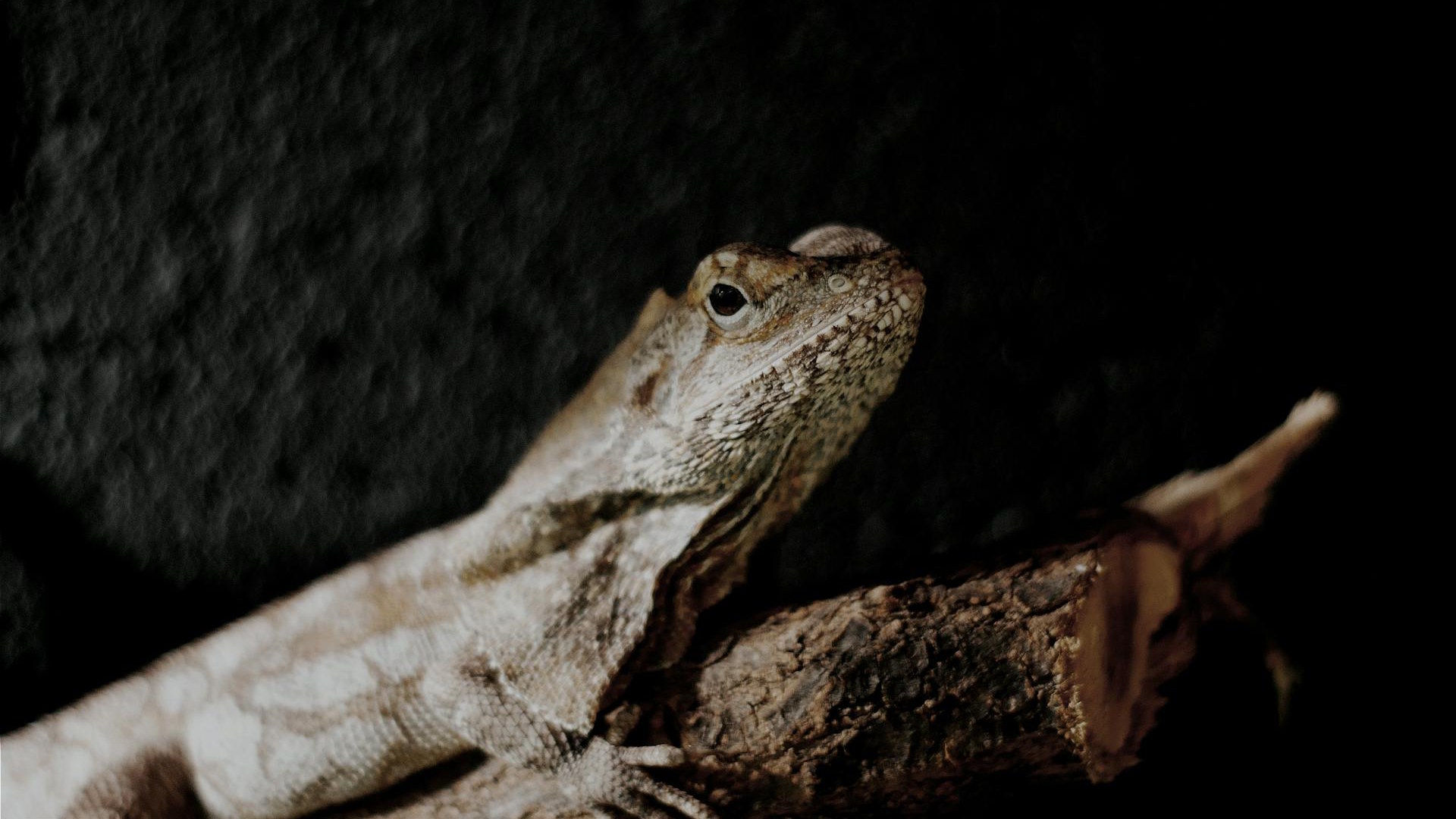The chameleon, with its mysteriously shifting hues and prehistoric appearance, has captivated human imagination for centuries. These remarkable reptiles seem to perform color-changing magic before our eyes, transforming from vibrant greens to deep blues or mottled browns in a matter of minutes. While popular culture often portrays chameleons as masters of camouflage who can match any background, the reality of how and why these creatures change color is far more fascinating than fiction suggests. The biological mechanisms enabling this color-changing ability represent one of nature’s most sophisticated visual communication systems. Through a complex interplay of specialized cells, hormones, and neural signals, chameleons have evolved an extraordinary way to express their emotional states, regulate body temperature, and communicate with other chameleons. Let’s explore the remarkable science behind this captivating natural phenomenon.
The Color-Changing Myth vs. Reality

Contrary to popular belief, chameleons don’t change color primarily to blend with their surroundings. While camouflage may occasionally benefit these reptiles, their color changes serve more complex purposes. Chameleons primarily shift colors to regulate body temperature, communicate with other chameleons, and express physiological states like stress, aggression, or readiness to mate. This misconception has persisted in popular culture, appearing in everything from children’s books to animated films. Understanding the true nature of chameleon color change reveals a more intricate and fascinating adaptation than simple camouflage. Research over recent decades has helped scientists unravel the actual purposes behind these dramatic color transformations.
The Specialized Skin Structure of Chameleons

Chameleon skin contains multiple layers that work together to create their color-changing abilities. The outermost transparent layer protects deeper layers where the color magic happens. Beneath this lies a layer containing specialized cells called chromatophores, which come in several varieties including xanthophores (containing yellow pigments), erythrophores (red pigments), and melanophores (brown/black pigments). Most remarkably, chameleons possess another type of cell called iridophores, which contain reflective guanine crystals arranged in a lattice structure. These iridophores are unique in their organization and function, allowing chameleons to reflect specific wavelengths of light depending on the spacing and arrangement of the crystals. This complex skin architecture forms the foundation of their color-changing capability.
Chromatophores: The Color-Producing Cells
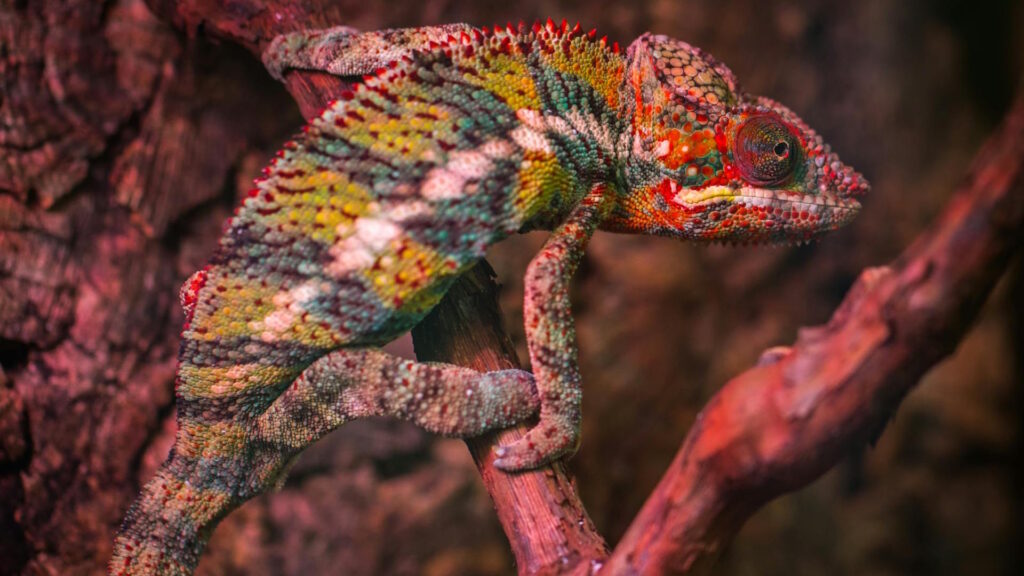
Chromatophores are specialized cells responsible for producing and displaying different pigments in chameleon skin. These cells function like tiny pigment packages that can expand or contract to reveal or hide their colors. Xanthophores contain yellow pigments derived from carotenoids and pteridines, while erythrophores hold red pigments. Melanophores contain the dark pigment melanin, which can be dispersed throughout the cell or concentrated in the center, affecting how much darkness appears in the skin. When melanophores disperse their pigment, the chameleon appears darker; when they concentrate it, lighter colors from other chromatophores become more visible. These various chromatophores work in concert, expanding and contracting in different combinations to create the chameleon’s diverse color palette.
Iridophores: The Revolutionary Discovery

A groundbreaking 2015 study published in Nature Communications revealed that panther chameleons possess two distinct layers of iridophores, which are cells containing reflective guanine crystals. The deeper layer reflects near-infrared light, potentially helping with thermoregulation, while the superficial layer can rapidly shift the spacing between the nanocrystals it contains. This adjustment changes which wavelengths of light are reflected, allowing chameleons to display blues, greens, and even ultraviolet colors without actual blue or green pigments. Researchers discovered that chameleons can actively tune these crystal lattices by relaxing or exciting the skin, essentially creating a sophisticated optical system that works like a selective mirror. This mechanism explains how chameleons can produce such vibrant blues and greens, colors rarely achieved through pigmentation alone in the animal kingdom.
The Neural Control of Color Change

The chameleon’s nervous system plays a crucial role in controlling its color changes. Color transformations can be triggered by signals from the brain in response to visual stimuli, temperature changes, or internal physiological states. These neural signals travel through the sympathetic nervous system to the chromatophores and iridophores, causing them to expand, contract, or change their crystal spacing. Hormones also influence this process, with stress hormones like adrenaline often triggering rapid color changes. The coordination between neural and hormonal systems allows chameleons to change colors both voluntarily and involuntarily. This complex neural control explains why a chameleon’s color can change almost instantaneously when it encounters a rival or potential mate.
Color Change for Communication
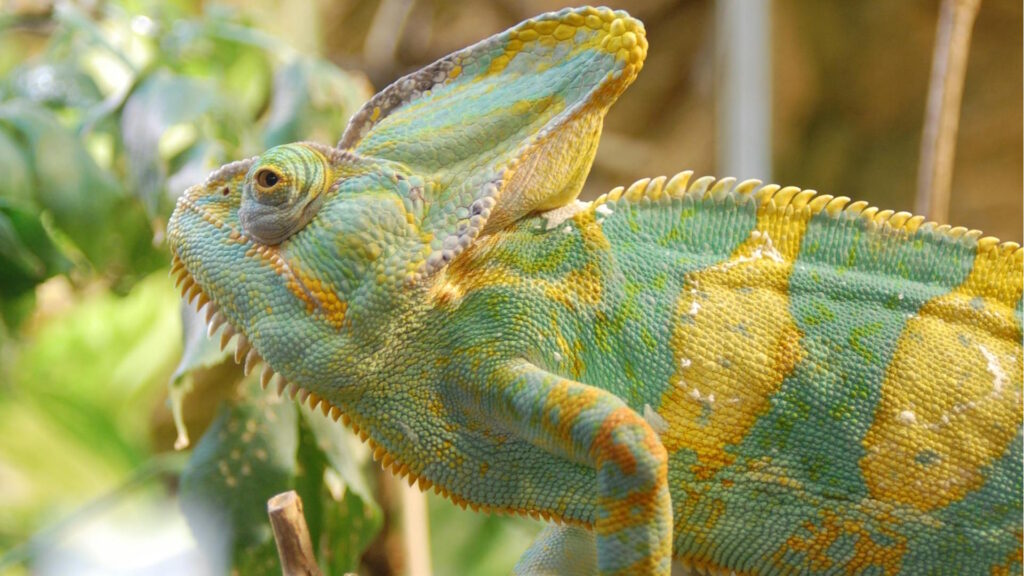
One of the primary functions of a chameleon’s color-changing ability is communication with other chameleons. Males often display bright, contrasting colors to establish dominance or attract females during breeding season. A male veiled chameleon, for instance, might transform from his normal green to a vibrant mix of yellows and blues when confronting another male. Females typically use more subtle color changes to signal receptivity to mating or to reject unsuitable males. Submissive chameleons often adopt darker, duller colors to signal their non-threatening status. This sophisticated visual communication system allows chameleons to convey complex messages without vocalizations, creating a silent language of color that researchers are still working to fully decode.
Thermoregulation Through Color

Chameleons are ectothermic, meaning they rely on external heat sources to regulate their body temperature. Their color-changing ability plays a crucial role in this thermoregulation process. When a chameleon needs to warm up, it may darken its skin to absorb more solar radiation. Conversely, when it needs to cool down, it might shift to lighter colors that reflect more sunlight. The deeper layer of iridophores, which reflects near-infrared light, may help prevent overheating by bouncing back a portion of the sun’s heat. This color-based temperature control is particularly important for chameleons living in habitats with significant temperature fluctuations. For a forest-dwelling species like the Parson’s chameleon, this ability helps them navigate between sunny and shaded areas while maintaining optimal body temperature.
Emotional States and Color Changes
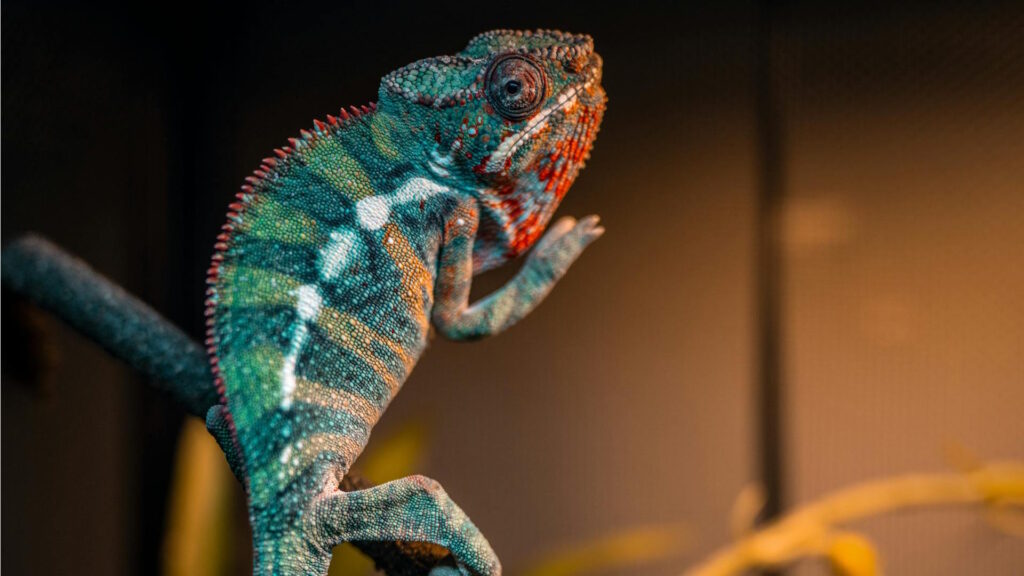
A chameleon’s coloration often reflects its emotional or physiological state. When stressed or ill, many chameleon species display darker, duller colors. An agitated chameleon might showcase vibrant, high-contrast patterns to ward off threats or competitors. Relaxed, healthy chameleons typically display their species’ characteristic colors—often various shades of green for forest-dwelling species. These emotional color changes are so reliable that experienced chameleon keepers can assess their pet’s well-being simply by observing its coloration. During handling, a chameleon may darken significantly, indicating stress, before gradually returning to its normal hues as it becomes more comfortable. This visible expression of internal states makes chameleons particularly fascinating as research subjects in studies of reptile behavior and psychology.
Limitations of Color-Changing Abilities

Despite their remarkable abilities, chameleons face several limitations in their color-changing capabilities. Each species has a genetically determined range of possible colors and patterns they can display. A panther chameleon can produce vibrant blues, reds, and greens, while a Namaqua chameleon from desert regions is limited to browns, tans, and pale yellows. Environmental factors also influence their color range, with nutrition playing a particularly important role. Carotenoid pigments must be obtained from the chameleon’s diet, so poor nutrition can limit color vibrancy. Additionally, sick or stressed chameleons often lose some color-changing ability, as these physiological processes require energy and healthy functioning systems. Even the most versatile chameleon species cannot instantly match any background like a high-tech camouflage system.
Species-Specific Color Variations
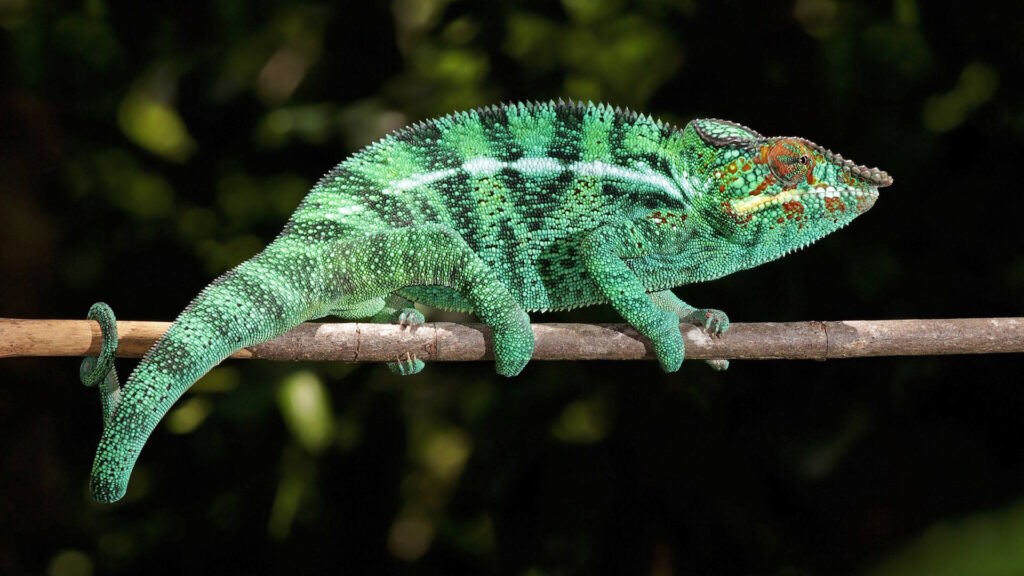
The approximately 200 species of chameleons exhibit tremendous diversity in their color-changing abilities. Panther chameleons (Furcifer pardalis) from Madagascar are renowned for their spectacular color transformations, with males capable of displaying nearly the entire visible spectrum. Veiled chameleons (Chamaeleo calyptratus) typically shift between various greens, browns, and yellows, often with distinctive patterning. In contrast, some pygmy chameleon species have much more limited color ranges, primarily changing brightness rather than hue. The Jackson’s chameleon (Trioceros jacksonii) displays moderate color-changing abilities, shifting between greens and browns with occasional yellow highlights. These variations reflect different evolutionary pressures and habitat adaptations across chameleon species, with more visually complex environments often correlating with more sophisticated color-changing abilities.
The Evolution of Color Change
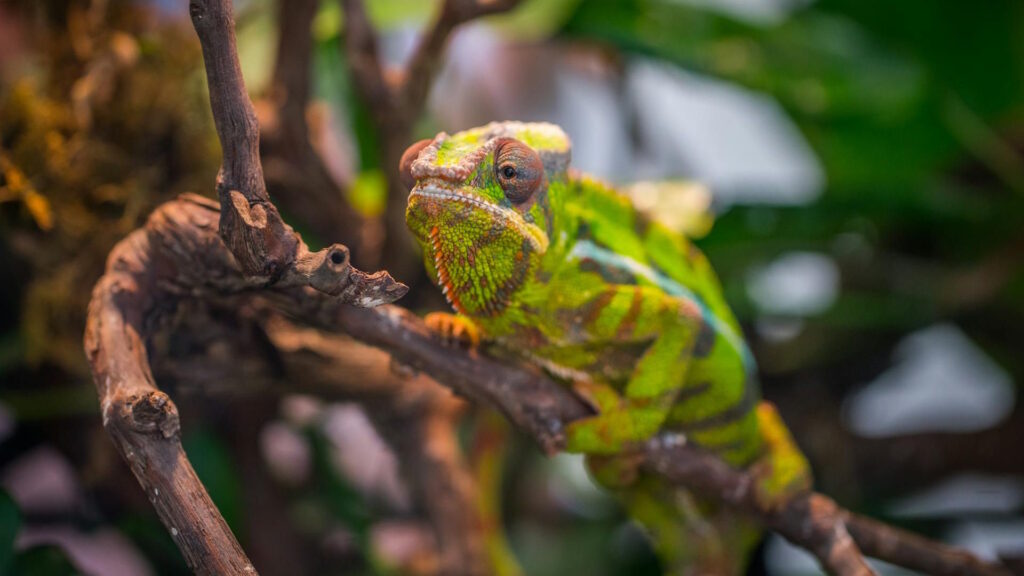
The evolutionary journey that led to chameleons’ color-changing abilities spans millions of years. Scientists believe this adaptation evolved primarily as a communication mechanism rather than for camouflage, as evidenced by the fact that many color changes make chameleons more conspicuous rather than less visible. The specialized iridophore cells likely developed gradually, with selective pressure favoring individuals that could communicate more effectively with potential mates and rivals. Fossil evidence is limited due to the poor preservation of skin structures, but comparative studies of living chameleon species and their relatives provide clues about this evolutionary pathway. The ancestors of modern chameleons likely possessed simpler forms of chromatophores before developing the complex dual-layer iridophore system that allows for such dramatic color shifts.
Scientific Research and Recent Discoveries

Our understanding of chameleon color change has advanced significantly in recent years thanks to sophisticated research techniques. The 2015 study led by Michel Milinkovitch and his team at the University of Geneva revolutionized our understanding by revealing the role of nanocrystals in producing structural colors. More recent research has utilized advanced imaging techniques like hyperspectral cameras to detect color changes invisible to the human eye, including in the ultraviolet spectrum that chameleons can see. Neurobiologists have also made progress in mapping the neural pathways that control color change, identifying specific brain regions responsible for different types of color displays. Ongoing research focuses on the genetic basis of these adaptations, with scientists working to identify the specific genes responsible for developing and controlling the specialized cells involved in color change.
Chameleon Conservation and the Impact of Climate Change
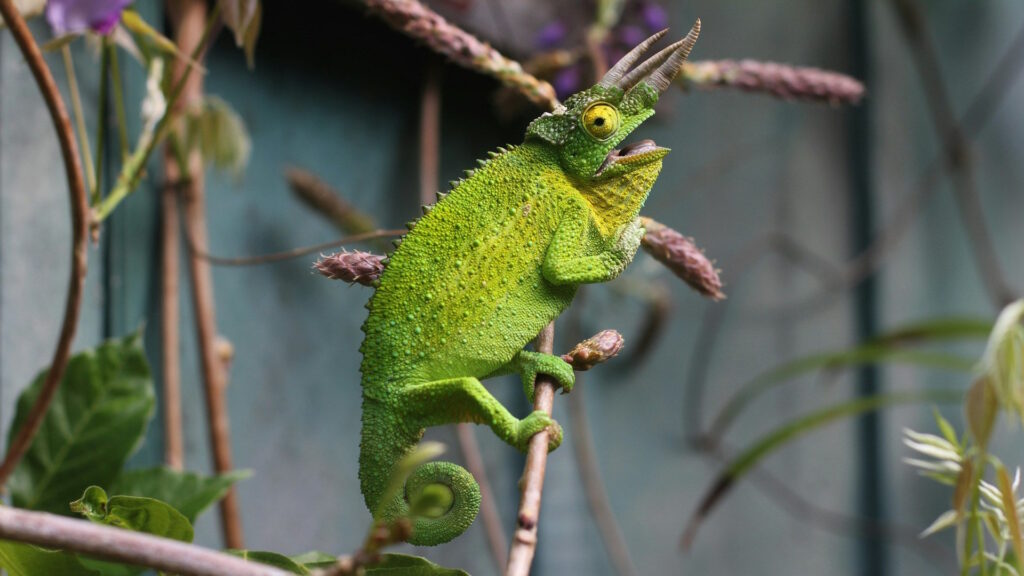
The specialized nature of chameleons’ color-changing mechanisms makes them particularly vulnerable to environmental changes. Many chameleon species are threatened by habitat loss, with Madagascar’s endemic species facing especially severe pressure as forests are cleared. Climate change poses additional challenges, as rising temperatures may disrupt the thermal regulation strategies that partially rely on color changes. Some research suggests that extreme heat events can impair chameleons’ color-changing abilities, potentially affecting their communication and mating success. Conservation efforts focus on habitat preservation and captive breeding programs for the most endangered species. Understanding the science behind chameleon color change helps conservationists monitor population health and develop effective protection strategies for these remarkable reptiles.
Conclusion
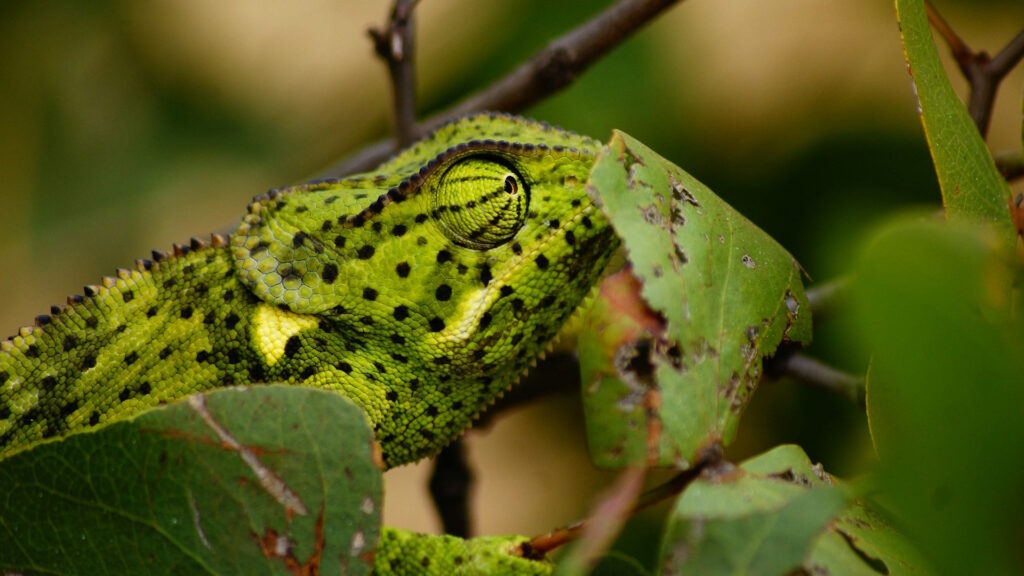
The chameleon’s color-changing ability represents one of nature’s most extraordinary adaptations, combining complex cellular structures with sophisticated neural control to create a visual communication system unmatched in the animal kingdom. Far from the simple camouflage mechanism often portrayed in popular culture, this ability serves multiple biological functions essential to chameleon survival and reproduction. As scientists continue to unravel the intricate mechanisms behind these color transformations, we gain not only a deeper appreciation for these remarkable reptiles but also potential inspiration for biomimetic technologies that could harness similar principles. The chameleon reminds us that even well-known natural phenomena often harbor unexpected complexities and wonders waiting to be discovered through careful scientific investigation.



